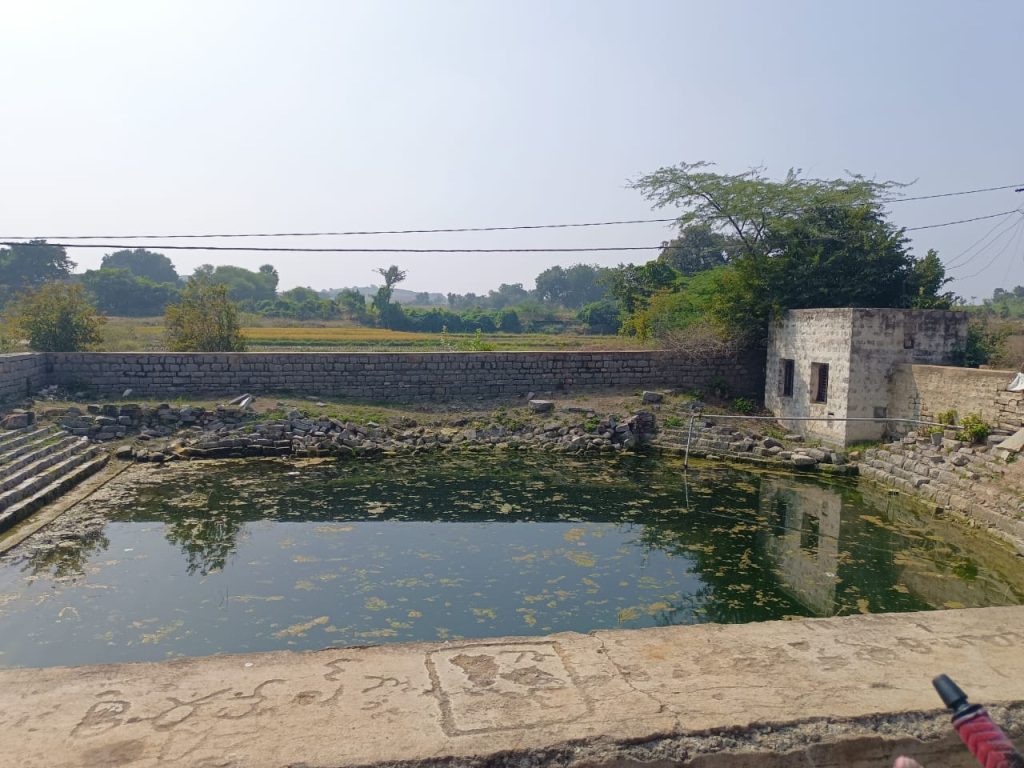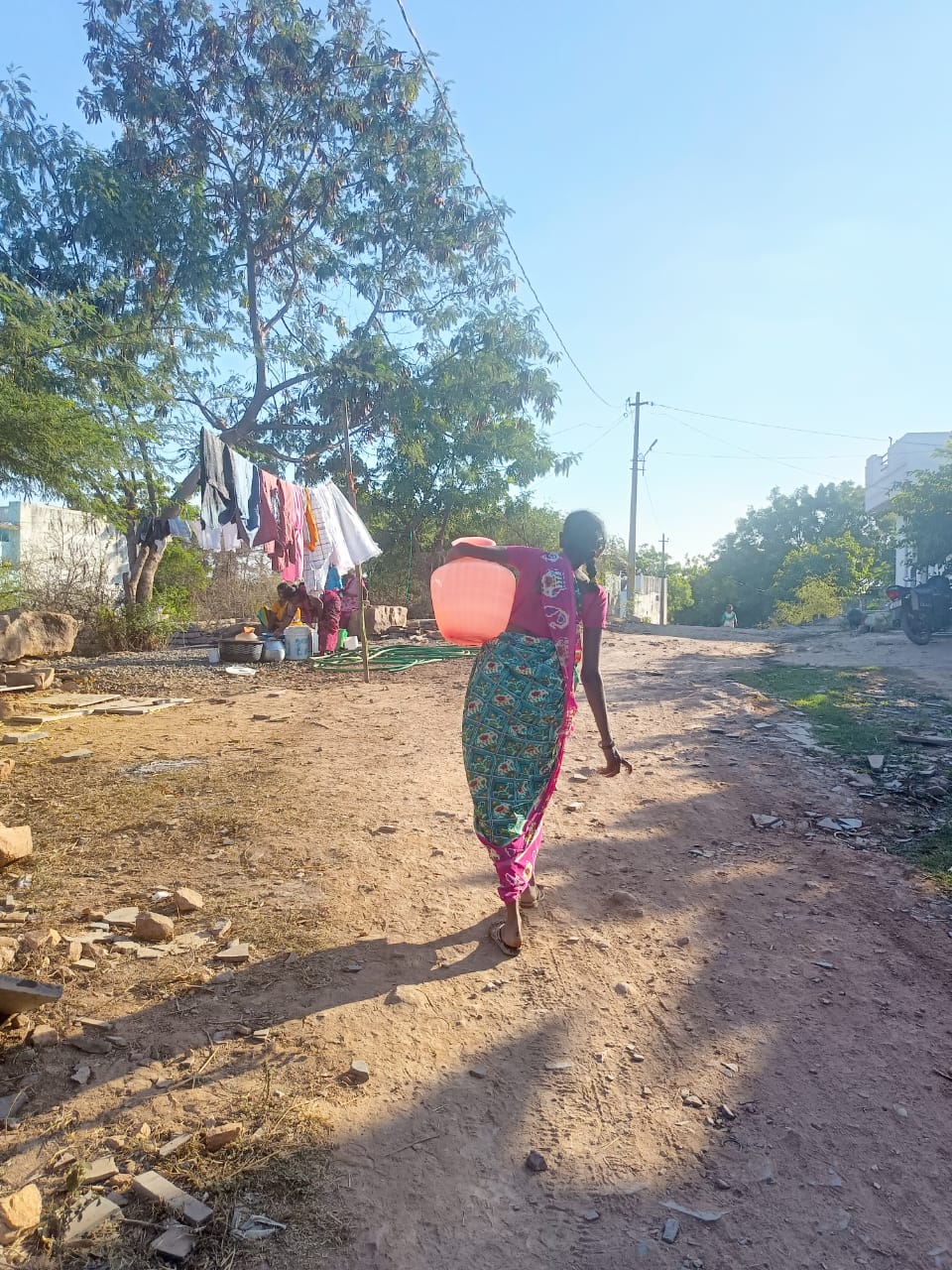The water grid project aims to provide clean drinking water to 138 habitations with a population of 2.86 lakh in Dhone Constituency
By Abhishikta Sunkari | January 10, 2024
For Dasthagiramma, a 55-year-old resident of Thaduru, a remote village in Dhone constituency, Andhra Pradesh, fetching water is a daily ritual etched in pain. Each morning, she walks for two kilometers to get drinking water from nearby borewells or a well on the outskirts of the village. She gets only four pots of water every day to do her daily household chores.
This is the reality of many families in Dhone, which is known as the driest constituency of Andhra Pradesh. The constituency’s annual rainfall is just 640.13mm compared with India’s average annual rainfall of 1190mm. Dhone’s thirsty days, however, are finally numbered. The first Water Grid Project will be implemented by 2024. The constituency is headed by the Finance Minister of Andhra Pradesh, Buggana Rajendranath Reddy. The story of Dhone’s water woes is not just about a single constituency. It’s a microcosm of India’s water crisis. As per the 2023 Central Ground Water Board (CGWB) report, out of 6,553 blocks in the country, 736 units have been categorized as ‘over-exploited’. This is due to the overextraction of water from the ground for irrigation and domestic purposes. The general depth of groundwater level of the country ranges from 5m to 10m building ground level (bgl). Very shallow water levels of less than 2m bgl are observed in a few states, such, as Andhra Pradesh, Bihar, Karnataka, Kerala, Jharkhand, and Assam, according to CGWB report 2023.This will be very crucial for the constituency because the ground-level water which has been over-exploited due to excessive extraction of water for more than 15 years, will now get substituted through the surface water, said Somasekhar. The climate prevailing over here is semiarid to arid. From the east coast, this part of the state does not receive the full benefits of the north-east and south-west monsoons. These monsoons contribute about 57% and 27% of the total rainfall for the year, respectively. This water grid project will focus on reducing the water crisis and supplying safe water to almost 2.86 lakh people including both rural and urban regions. The Andhra Pradesh government, under the Department of Rural Supply and Sanitation, embarked on a Water Grid Project in May 2021, with a budget of Rs.300 crore to provide clean drinking water to every household in the Dhone Constituency.
By January second week of 2024, a few habitations near Bethamcherla Mandal will get a drinking water facility, said P. Vasu Water Grid Project head from Megha Engineering Infrastructure Limited. This project aims to give treated water from Sri Narasimharaya Sagar (Gorakallu) Reservoir, one of the largest reservoirs in the state with a water capacity of almost 12 TMC (Thousand Million Cubic Feet) to 138 villages, said P. Vasu. The water treatment plant which is a significant part of the project, located in Bethamcherla Mandal, purifies the reservoir’s water and then supplies clean drinking water across 138 villages, said P. Vasu. The entire pipeline network for this project is 585km out of which more than 270 km of pipeline work has been completed.

The well in Chanugondla is polluted and villagers get water only from this well. Credits: Abhishikta Sunkari
Anupamma, a 52-year-old resident of Kothakota in Dhone Mandal, has suffered from leg cramps as she continues to go and get 20-30 pots of water every day to survive. “The water tanks are not even cleaned properly and the dust is being flown in the water which is the worst,” she said. Summers are terrible as the availability of water is minimal and women especially fight with each other to get water, she said. Through this scheme, every household shall get 100 litres of water per head every day in rural areas and 135 litres of water per head each day in urban areas, exceeding the World Health Organization guidelines of providing 60 litres per head in rural regions, said P. Vasu. Dhanaveera, a 45-year-old male who resides in a hilly village, Chanugondla said that the entire village depends merely on one well for many years.
“My family of four members survive by drinking salt water from the well”, he said. Due to unpurified water in the well, more than 10 percent of the villagers suffer from knee pains at the age of 35. “The hand pumps are also not working, as the ground level water is very low”,said Dhanaveera. “The total number of water-borne diseases will be reduced with this kind of project”, said Prof. P Purushotham, a water academician at Osmania University, Hyderabad. The fluoride level in water should be one ppm (parts per million) according to the World Health Organization. But, the fluoride content in this well which has caused knee and joint pains could be around two or three ppm, said Purushotham. The water will be disinfected in the water treatment plant through the gas chlorination method. The pH metric is used in the filter beds to check the pH level of water, before supplying it across the villages. The entire project will be completed by May 2024, said Somasekhar. “The government should ensure that there will be no possibility of contamination, during rains or breakage of pipes, etc,” Purushotham said. Similar projects have been set up in two other constituencies of Andhra Pradesh. The work is under progress and the budget allocated for these two projects is Rs.300 crore approximately.

